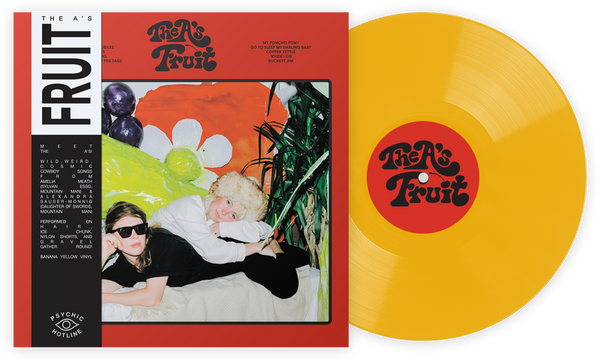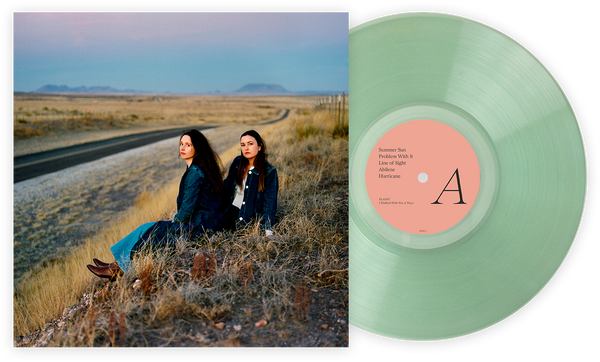Turning The Beat Around: In Praise Of The LP Back Cover
For physical medium fetishists, one major appeal of the 12” vinyl format is the big, beautiful cover art—just ask my local IKEA, which has been out of GLADSAX LP frames for the past two months. We all have our favorite album covers, and there’s even a sizable cult following for covers so bad they become objects of camp appreciation. But the biggest place in my heart is reserved for that unsung hero of album art: the back cover.
From its unglamorous roots as a place for no-nonsense liner notes and song credits, the LP back cover later flourished into a statement piece all its own. At its best, the back cover is the arty, fan-favorite “B-side” to the front cover’s radio-friendly “A-side”; a great back cover image can complicate, or even improve upon, its equivalent on the other side of the sleeve. Take, for example, one of my all-time favorite back covers, for Prince’s 1980 album Dirty Mind. The front cover is, of course, iconic—the artist in trenchcoat, bikini briefs and little else, posed before a backdrop of exposed bedsprings—but the back cover is at once more vulnerable and more confrontational: Prince in repose, splayed out beneath a graffiti-like track list, his exposed hip creating the illusion of nudity from the waist down. For me, at least, it’s an even more arresting image than the front cover—which is why, for the last several years, I’ve had Dirty Mind framed in my apartment, back facing out.

Prince was unquestionably a master of the back LP cover: see, for example, his infamous nude-Pegasus-riding back cover for his self-titled 1979 album. But he was hardly the first pioneer of the form. Back covers appropriately began their renaissance around the same time as front covers: the mid-1960s, when art-rock albums like the Beatles’ Sgt. Pepper’s Lonely Hearts Club Band (1967) eschewed the industry conventions of record packaging to become art objects all their own. Aside from historical significance, Sgt. Pepper’s back cover isn’t all that impressive—just lyrics and a photo of the Beatles in their psychedelic Edwardian marching-band regalia—but the back of 1969’s Abbey Road is nearly as iconic as the famous front, showing a London woman blur past a street sign manipulated into the album’s title.

Another innovation in cover design widely attributed to the Beatles is the gatefold sleeve, which came into prominence after Sgt. Pepper for albums that wanted to advertise their high production values (suitability for rolling joints). Not every back gatefold makes a great back cover: many of the most iconic, like Pink Floyd’s The Dark Side of the Moon (1973), only really work as extensions of the front. But sometimes, the back half of a gatefold can be a fascinating cover image in itself. Mati Klarwein’s sleeve art for Miles Davis’ Bitches Brew (1970) is one such example: a kind of reverse image of the front cover, it seamlessly extends the blend of psychedelic and Afrocentric imagery, replacing the blue sky of the front with a field of stars and a palette of rich browns, pinks and purples. It’s both a perfect complement to the more famous front cover and an appealing alternative.

Other back covers can evoke their front-facing counterparts in distinct and potentially transformative ways. Some of David Bowie’s albums are especially good for this. The back of 1972’s The Rise and Fall of Ziggy Stardust and the Spiders from Mars is the tight mid-shot to the front’s wide establishing frame, placing Bowie’s new glam-rock identity in the curiously prosaic confines of a London telephone box. The back cover for his followup, 1973’s Aladdin Sane, is even more compelling: just a simple outline of Bowie’s bust from the front, simultaneously predicting the present-day trend of minimalist cover art remixes and literally illustrating the album’s themes of identity as unfixed and performative.


Of course, there’s another value to a great back cover that is purely practical in nature. While plenty of great albums have bad or mediocre album art, the reverse is far less common—and the likelihood of a bad or mediocre album having great back cover art is practically unheard of. Basically, if an artist and/or record label cares enough about their product to make sure even the back sleeve is on point, you can be reasonably assured that the music inside is up to snuff. The cliché may say not to judge a book by its cover, but judging an album by its back cover can yield surprisingly fruitful results.
Zachary Hoskins is a freelance writer and recovering academic. He blogs and podcasts about Prince at princesongs.org, and about other stuff at dystopiandanceparty.com. He lives outside Washington, DC.
Join the Club!
Join Now, Starting at $44Exclusive 15% Off for Teachers, Students, Military members, Healthcare professionals & First Responders - Get Verified!












